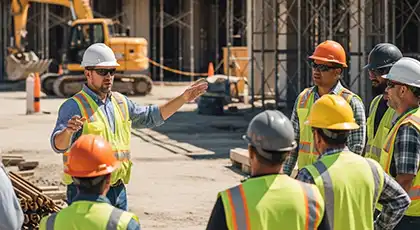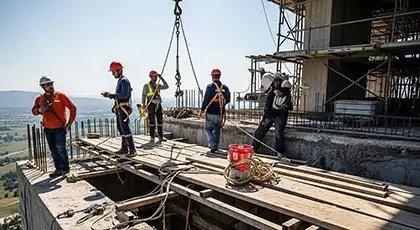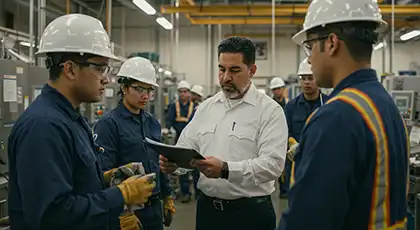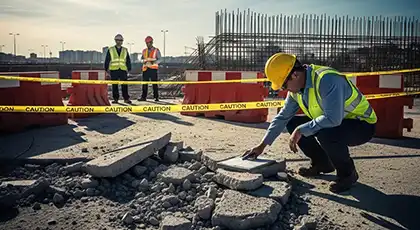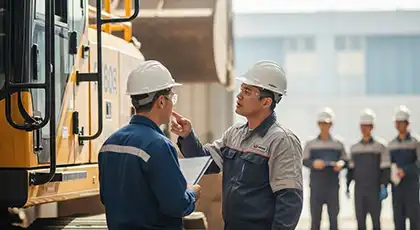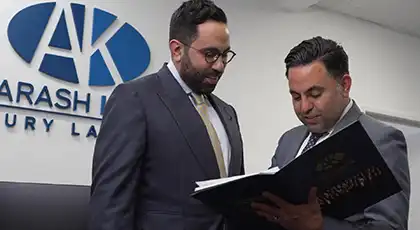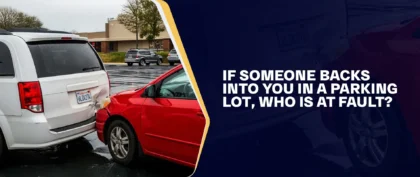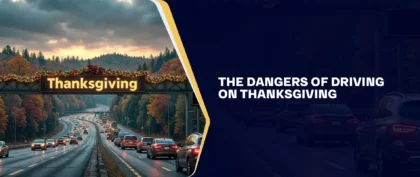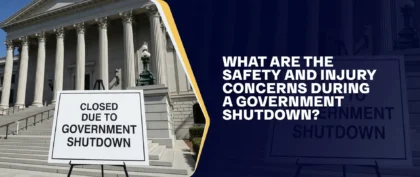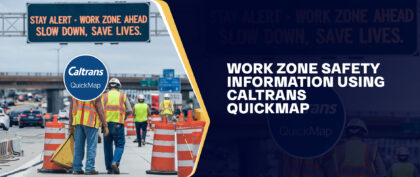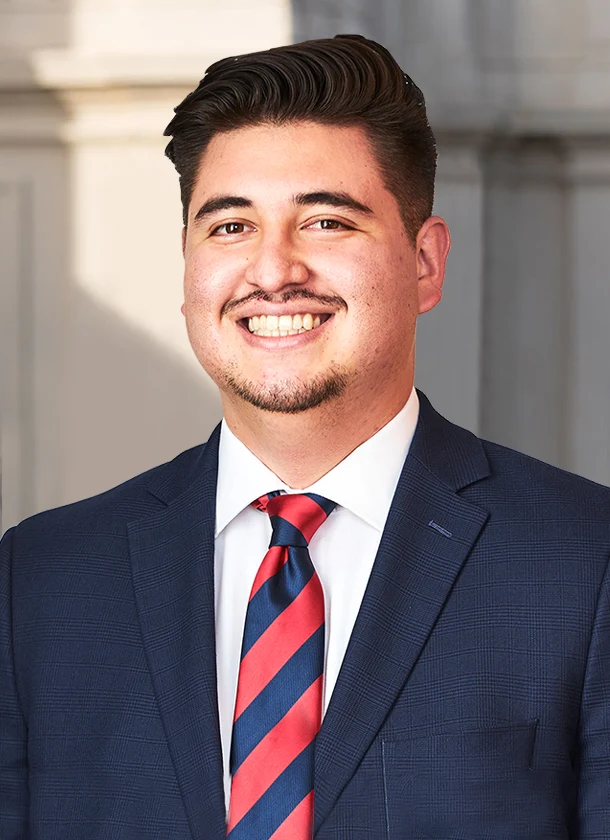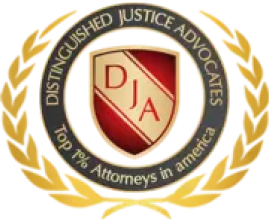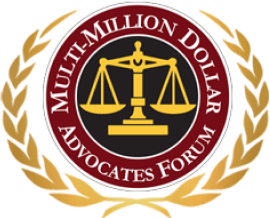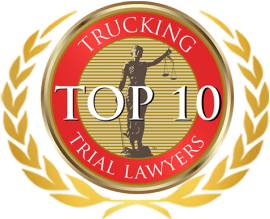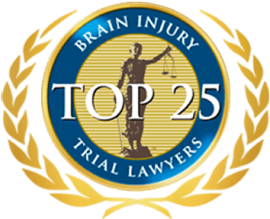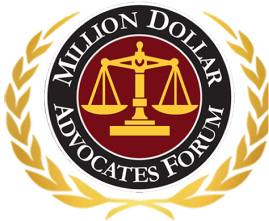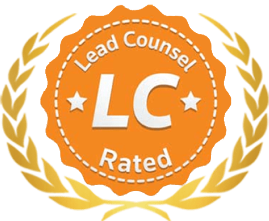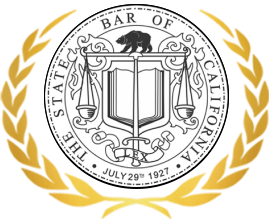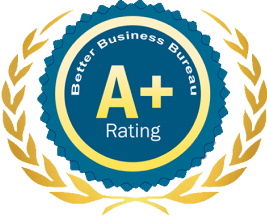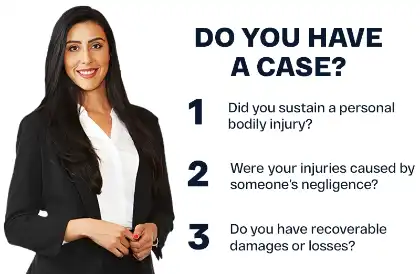TL;DR: OSHA enforces its standards through inspections, citations, and fines. It also requires employers to fix hazards and follow safety regulations.
Table of Contents
The Occupational Safety and Health Administration (OSHA) enforces its safety standards by conducting workplace inspections, issuing citations and fines for violations, and requiring employers to fix hazardous conditions within a set deadline. The agency also protects whistleblowers, refers extreme cases for criminal prosecution, and helps businesses improve safety through free consultations and training.
Understanding how OSHA operates can help injured workers recognize safety failures, protect their rights, and support claims for compensation.
OSHA Enforcement At A Glance
| Enforcement Tool | Description |
| Inspections | OSHA conducts onsite visits to check compliance (often unannounced). |
| Citations & Fines | The agency issues these for safety violations, with penalties based on severity. |
| Abatement Requirements | Employers must fix issues by a deadline and provide proof. |
| Follow-Up Visits | OSHA returns to ensure the employer corrects hazards. |
| Criminal Referrals | Willful violations, falsified records, or deaths may trigger DOJ action. |
| Worker Protection | Workers are protected from retaliation when reporting hazards. |
| Consultations & Partnerships | OSHA offers training and support programs to prevent violations. |
Real Examples Of OSHA Or Cal/OSHA Enforcement
These OSHA enforcement examples show what can happen when employers don’t follow safety rules. Whether it’s a deadly equipment accident or unsafe working conditions, these real cases help explain how the agency responds to serious violations.
- Alco Iron & Metal — In January 2025, a 41‑year‑old mechanic was crushed by a collapsing forklift at Alco’s San Leandro recycling facility, marking the company’s third fatal incident in eight years. OSHA launched an investigation; the company has a persistent history of serious safety violations. Previous fines included:
- $18,000 in Stockton (2022) after a 4,000-pound wire bundle crushed a worker (which Alco appealed and has not yet paid).
- $45,000 in San Leandro (2017) after a screw conveyor collapse, ultimately reduced to $7,000 after appeal.
The company remains in operation while the safety citations are still being contested.
- Tesla Cited for Heat Safety Violation — Cal/OSHA fined Tesla $13,500 in 2024 after workers at its Fremont factory were exposed to dangerous indoor heat without proper breaks or cooling areas. At least 50 employees were at risk of heat illness, violating California’s indoor heat safety rules.
What Does OSHA Do To Keep Workplaces Safe?
In 1970, Congress passed the Occupational Safety and Health (OSH) Act to improve worker safety nationwide.
The OSH Act led to the creation of three key agencies to carry out its mission:
- Occupational Safety and Health Administration (OSHA).
- Occupational Safety and Health Review Commission (OSHRC).
- Mine Safety and Health Administration (MSHA).
OSHA’s main goal is to prevent accidents and protect workers from harm. The agency enforces safety laws and helps employers comply by addressing a wide range of issues, including workplace accidents, hazardous conditions, and even forms of workplace harassment that compromise worker safety and well-being. OSHA takes action through the following efforts:
- Creates Safety Standards — Establishes regulations tailored to different industries and job roles.
- Inspects Workplaces — Conducts onsite reviews to check for compliance.
- Investigates Accidents — Reviews incidents like serious injuries or fatalities to understand what went wrong.
- Issues Citations & Fines — Penalizes employers who fail to follow safety laws.
- Reviews Safety Plans — Assesses if companies have effective safety protocols.
- Encourages a Safety-First Culture — Evaluates workplace attitude toward hazard prevention.
- Responds to Complaints — Investigates formal reports from workers or third parties.
- Focuses on High-Risk Jobs — Monitors dangerous industries, such as construction or manufacturing.
- Provides Free Support & Training — Offers resources to help employers avoid violations.
- Protects Whistleblowers — Ensures workers can report hazards without fear of retaliation.
Understanding how these responsibilities work together can help you recognize when your safety is at risk. If your workplace isn’t meeting these standards and you’ve suffered harm, it may be time to explore your legal options with the help of an employment lawyer or injury attorney. You may be looking for free accident lawyer advice. Our law firm offers guidance through a no-cost, no-obligation initial consultation.
What Triggers An OSHA Inspection?
OSHA inspections are often unannounced, but typically occur in the following instances:
- Imminent Danger Situations — Conditions that could cause death or serious physical harm require an urgent response.
- Severe Injuries & Complaints — Employers must report fatalities within 8 hours and hospitalizations, amputations, or eye loss within 24 hours.
- High-Risk Industries — Construction, manufacturing, warehousing, and healthcare workplaces are inspected more often due to increased risk.
- Follow-up Inspections — Past violators are often re-inspected to confirm that they addressed the hazards.
Other sources include reports from public health agencies, law enforcement, or community tips.
What Workplace Records Does OSHA Require?
Employers with more than 10 employees must log serious workplace injuries and illnesses. Minor injuries that only require first aid are exempt.
- OSHA Form 301 — Detailed injury or illness report.
- OSHA Form 300 — Yearly log of all workplace incidents.
- OSHA Form 300A — Public summary posted from February to April.
Employees or their representatives can request and review these records.
Industry-Specific OSHA Regulations
OSHA has different safety rules for different types of jobs because each industry has its own dangers. Here are some examples of how these rules apply to high-risk industries:
Construction Industry
Construction workers face serious hazards like falls, machinery accidents, dust inhalation, and chemical exposure. OSHA’s safety rules for construction include:
- Fall Protection — Workers working over six feet from the ground must use safety equipment like guardrails, nets, or harnesses.
- Hazard Disclosure & Training — Employers must train workers about job dangers.
- Scaffolding Safety — Proper platform construction and maintenance are essential. Workers need training to use scaffolds correctly.
- Breathing Protection — Dust and fumes require proper masks and training on safe use. Medical checkups may also be necessary.
- Crane & Machinery Safety — Employers ensure equipment meets safety standards, train workers properly, and schedule regular inspections.
- Electrical Safety — OSHA has rules to prevent shocks, burns, and fires through safe wiring and equipment.
- Personal Protective Equipment (PPE) — Employers must provide and supervise the use of gear, like hard hats, gloves, and goggles.
- Excavation Safety — Trenches must be inspected daily, and digging must follow safety rules to prevent collapses.
- Fire Safety — Worksites need fire extinguishers, emergency plans, and training to prevent or respond to fires.
Maritime Industry
Maritime jobs, such as shipbuilding and cargo handling, involve risks like chemical exposure, falls, tight workspaces, and fires. OSHA requires these employers to:
- Keep Work Areas Clean — Remove debris and trip hazards from walking and working surfaces.
- Ensure Equipment Access — Workers must easily reach ladders, ropes, safety tools, and fire protection gear.
- Maintain Fire Safety Tools — Firefighting equipment must be available and in good working condition.
Many marine workers operate alone in hazardous environments like confined spaces or isolated areas. OSHA has extra rules to keep them safe, including:
- Special Protections for Isolated Workers — These include specific procedures for working in remote or closed-off spaces where help may not be immediately available.
Maritime employers are also responsible for emergency medical care. They must provide:
- Clean, waterproof first aid kits.
- Eye wash or body rinse stations.
- A first aid provider within five minutes.
- Onsite, CPR-trained staff during shifts.
- Stretchers or similar rescue equipment.
Ignoring these standards puts workers at greater risk, and legal action may be an option if injuries occur as a result.
What Happens During An OSHA Inspection?
If a serious injury occurs or someone reports unsafe conditions, OSHA may inspect the workplace. The OSHA inspection process is clear and thorough, so nothing important gets missed.
- Opening Conference — The Inspector meets with employer and worker representatives to explain the inspection.
- Walkaround — The Inspector tours the site, interviews workers, and checks for hazards.
- Closing Conference — The agency presents its findings. Employers may fix issues immediately, but the violations remain on record.
Workers have the right to participate in the inspection process. An employee representative may accompany the inspector during the walkaround. Workers can also report hazards directly to OSHA and have the right to request anonymity to avoid retaliation.
These inspections can become strong evidence in workers’ compensation or third-party injury claims. If you’re unsure how the inspection affects your legal options, speaking with a workplace injury lawyer can help you make sense of the next steps.
How OSHA Responds To Safety Violations At Work
OSHA can issue citations, which include penalties like:
- Serious Violations — Fines up to $16,550 per violation.
- Willful or Repeated Violations — Up to $165,514 per violation.
- Failure to Abate — $16,550 per day until resolved.
Employers must fix hazards and may face follow-up visits. They have 15 business days to contest citations.
After OSHA finds a violation, it has up to six months to issue a penalty. From there, your employer has a few ways to respond:
- They can fix the problem and show proof that the employer has addressed the hazard.
- They can ask for an informal meeting with OSHA to explain their side or clarify the situation.
- They can challenge the citation through a formal appeal if they disagree with the findings.
How your employer handles the citation can affect your claim, especially if the unsafe condition played a role in your injury. Their response might reveal whether they took your safety seriously or didn’t.
What If An Employer Disagrees With A Citation?
Employers can appeal through the OSHRC. Here’s what typically happens during the appeal process:
- Submit a written notice within 15 business days.
- An Administrative Law Judge (ALJ) reviews the case.
- A hearing is scheduled and attended by OSHA attorneys.
- A decision is issued; if unchallenged within 30 days, it becomes final.
If the employer wins the appeal, the citation may be withdrawn or downgraded, and any associated fines or abatement requirements may be removed.
This could weaken the injured worker’s claim if the citation was being used as supporting evidence of employer negligence. However, it does not automatically prevent an employee from pursuing a workers’ compensation or personal injury claim. Other forms of evidence, such as medical records, witness statements, and company safety policies, can still support the case.
OSHA’s Multi-Employer Citation Policy
On many job sites, several companies work together in the same area. If there are safety violations, OSHA may cite more than one company. Here’s how the agency decides who is responsible:
- Identify the Employer’s Role — The first step is to figure out which role the employer plays. Employers can fall under more than one category, depending on the situation. Here are the categories:
- The Creating Employer — This company caused safety hazards on the job site, even if its workers weren’t exposed.
- The Exposing Employer — The company whose workers were in danger.
- The Correcting Employer — The company responsible for fixing or removing the hazard.
- The Controlling Employer — This company has overall authority for safety and work conditions at the site.
Only Exposing Employers may face charges under the General Duty Clause, which requires them to provide a safe work environment.
- Determine If the Employer Took Enough Action — Check if the employer did enough to follow safety rules. The actions they should take depend on which category they fall under.
Can OSHA Refer A Company For Criminal Charges?
Yes. In serious cases, OSHA may refer violations to the Department of Justice.
- Willful violations resulting in death.
- Falsified OSHA records.
- Lying during investigations.
- Illegal advance notice of inspections.
- Environmental crimes involving workplace hazards.
OSHA violation penalties can include fines up to $250,000 and jail time of up to six months.
What Is Cal/OSHA, And How Does It Differ From Federal OSHA?
Cal/OSHA (California Division of Occupational Safety and Health) is a state-run program that manages workplace safety. It operates under a State Plan approved by federal OSHA, giving it full authority to enforce workplace safety standards throughout the state.
California is one of 22 states that manage their own safety programs for both private and public sector workers. That means Cal/OSHA creates and enforces rules that apply specifically to California employers, including industries like construction, agriculture, and manufacturing.
While Cal/OSHA must meet or exceed federal OSHA standards, there are key differences:
- Stronger Protections — Cal/OSHA often has stricter safety regulations than federal OSHA, especially for heat illness prevention, repetitive motion injuries, and workplace violence in certain sectors.
- More Detailed Reporting — California requires additional documentation and injury reporting compared to the federal system.
- State-Specific Priorities — Cal/OSHA addresses risks unique to California, including those related to wildfires, earthquakes, and extreme heat.
- Expanded Coverage — Cal/OSHA may extend protections to certain workers, like some public sector employees, who fall outside federal coverage.
Even though Cal/OSHA operates independently, federal OSHA continues to oversee and approve the state’s program to ensure it meets national safety goals. If you work in California, your employer is required to follow Cal/OSHA standards, which may carry different obligations and penalties than those under federal law.
How Does OSHA Work With Employers To Prevent Accidents?
OSHA works with businesses to improve safety through voluntary programs that promote prevention and education. These partnerships help employers identify risks and build stronger safety cultures.
- Voluntary Protection Programs — The Voluntary Protection Programs (VPP) recognize workplaces with exceptional safety records. OSHA verifies qualifying sites and places them into one of three categories:
- Star — Top-level safety practices.
- Merit — Improving safety programs.
- Demonstration — Testing new safety methods.
The Special Government Employee (SGE) Program trains workers to assist with safety evaluations and develop their skills.
- Free OSHA Consultation Services — OSHA offers free, confidential consultations to help businesses:
- Identify and fix hazards.
- Improve safety policies.
- Train workers.
- Access written safety reports and resources.
These visits are separate from enforcement. Consultants don’t issue citations, report violations, or guarantee inspection outcomes. Employers must request these visits directly.
- The OSHA Alliance Program — OSHA partners with organizations like schools, unions, and professional groups to raise safety awareness. Together, they create tools and training for workers and employers.
- OSHA Strategic Partnerships Program (OSPP) — In the OSPP, OSHA works with employers, unions, and others to improve safety in high-risk settings. Each partnership includes goals, timelines, safety metrics, and employee involvement. Local OSHA offices manage these programs and do not exempt companies from inspections or legal duties.
How An Incident Investigation Protects You And Others At Work
When something goes wrong on the job, your employer should do more than just clean up and move on. A proper investigation helps prevent the same thing from happening again to you or a coworker. OSHA has a clear process employers should follow after a serious workplace incident.
Here’s what that process should include:
- Protecting the Scene — Secure the area right away. This step keeps the evidence intact and gives investigators a clear view of what happened.
- Gathering Information — The investigation should include witness accounts, training records, safety logs, and reports from emergency responders. Each detail helps build a full picture of the incident.
- Finding the Cause — Looking deeper than just the surface issue is important. Larger problems like poor training, broken equipment, or unsafe procedures cause many accidents.
- Correcting the Problem — Once the cause is clear, your employer needs to take action. That could mean updating safety protocols, fixing equipment, or improving employee training.
When your employer takes this process seriously, it shows a real commitment to keeping you safe. On the other hand, if they fail to investigate or ignore known risks, it puts you and others in danger.
If you suffered injuries at work and believe your employer did not take the right steps to fix the problem, that failure may support your claim. A workplace injury lawyer can help you understand how the investigation affects your legal options.
Workers’ Rights Under OSHA And What To Do If A Workplace Is Unsafe
You have the right to a safe workplace. OSHA not only sets safety rules for employers, but it also protects your rights as a worker. These protections let you report dangers without fear of punishment.
If you think your workplace is unsafe, take action to protect your health and legal rights:
- Report Hazards or Injuries — Tell your supervisor right away. If they ignore you, contact a union rep or report the issue directly to OSHA. In California, workplace injuries must be reported to your employer within 30 days to protect your right to workers’ compensation.
- Request an Inspection — You can ask OSHA to inspect your workplace and check for safety violations.
- Ask for Safety Training — If your employer hasn’t trained you to handle workplace risks, you have the right to request proper training.
- Follow Safety Rules and Ask Questions — Use equipment correctly and speak up if you’re unsure how to do something safely.
You’re also protected from retaliation for reporting workplace hazards. That means your employer can’t legally fire, demote, or treat you unfairly for speaking up.
If unsafe conditions caused your injury, it’s important to report the problem and talk to a personal injury attorney. They can explain your options and help you take the next steps.
Frequently Asked Questions About OSHA Standards
We’ve compiled the answers to the most commonly asked questions about OSHA Standards. However, don’t hesitate to consult an injury attorney if you have any legal questions regarding a workplace accident.
What Is OSHA Enforcement?
OSHA enforcement is how the government makes sure employers follow workplace safety laws. It involves workplace inspections, citations for violations, and financial penalties. Enforcement helps reduce dangerous practices and supports legal claims when employers fail to fix known risks.
Can A Business Recover From An OSHA Violation?
Yes, a business can recover by fixing the problem and showing OSHA it took action.
Employers must correct the issue, report the fix to OSHA, and take steps to improve training and safety practices. While OSHA may issue fines, the goal is long-term safety improvement, not punishment.
How Do You Ensure Safety Compliance?
Employers can stay compliant by identifying hazards, training workers, and following updated safety rules. They must maintain equipment, post clear signage, provide PPE, encourage open communication, and conduct regular audits.
If you believe your employer is not following safety rules, you can report them for employment law violations. You may have a valid claim if their negligence led to your getting injured. A personal injury lawyer can explain your legal options.
How Long Do I Have To File A Claim After A Workplace Injury?
In California, you generally have one year from the date of injury to file a workers’ compensation claim and two years for a personal injury lawsuit involving a third party.
You must also report the injury to your employer within 30 days. Delays can result in a denied claim. To protect your rights, notify your employer promptly and speak with a personal injury attorney as early as possible, as they may be able to identify any exceptions that could extend or shorten the deadline in your case.
How Does OSHA Enforce Its Standards?
OSHA enforces safety standards through inspections, citations, fines, and follow-up visits to ensure employers correct hazards.
Complaints, serious injuries, or hazards in high-risk industries may trigger inspections. If there are violations, OSHA issues citations and sets a deadline for correction. Fines depend on the severity of the breach, ranging from serious to willful or repeated offenses.
Workers can report unsafe conditions if they believe their workplace is hazardous. You can complete this process online, by phone, or by mail through OSHA’s official process. Knowing how to file an OSHA complaint helps ensure your report is taken seriously and kept confidential if requested.
The agency also protects employees from retaliation for reporting violations or cooperating with investigations. It supports employers through consultations, training, and safety programs to help prevent violations before they happen.
Is Your Workplace Unsafe? Talk To A Lawyer Who Understands OSHA Rules
Not every employer puts safety first. While many follow the rules, some fail to fix known hazards or take proper precautions. When that happens, you may be left dealing with the consequences.
Unsafe conditions can lead to catastrophic injuries. You may face physical pain, emotional stress, and financial pressure from medical bills or missed work. If your employer failed to correct a hazard, that failure could be a key factor in your legal claim.
A personal injury attorney familiar with OSHA standards can assist you in understanding your legal options. At Arash Law, we represent clients in personal injury cases, workers’ compensation claims, and third-party lawsuits. These claims often involve multiple parties, overlapping rules, and detailed procedures.
Aside from car accident lawyers, our team includes workers’ compensation lawyers who help injured employees. We guide clients through the claims process and assist with communications involving insurance or other parties involved in the claim.
If you’re unsure about your options or thinking, “I need a personal injury lawyer,” call us at (888) 488-1391 to speak with our team.

